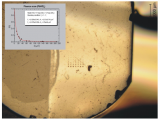A search for the Standard Model Higgs boson in proton-proton collisions with the ATLAS detector at the LHC is presented. In the datasets collected at √s = 7 TeV in 2011 and at √s = 8 TeV in 2012 the decay channels H→ZZ(∗)→4ℓ, H→γγ and H→WW(∗)→eνμν have been investigated. Clear evidence for the production of a neutral boson with a measured mass of 126.0 ± 0.4 (stat) ± 0.4 (sys) GeV is presented. This observation, which has a significance of 5.9 standard deviations, is compatible with the production and decay of the Standard Model Higgs boson.












